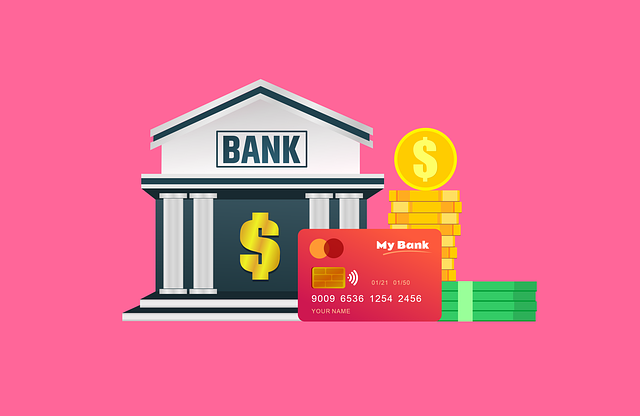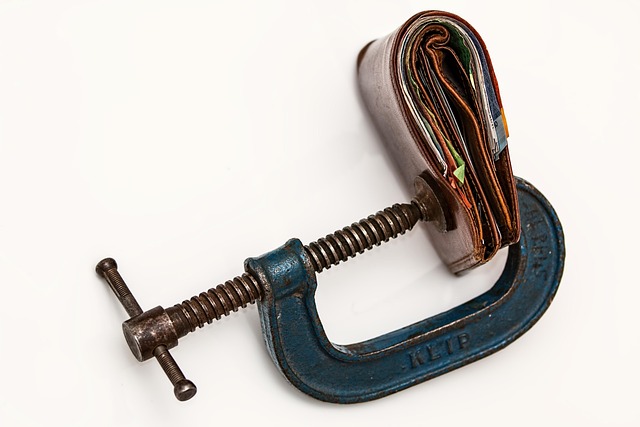Students burdened by private student loan debt face complex challenges. This text offers a comprehensive guide to managing and reducing this debt through several strategies. Loan Consolidation Options simplify repayment by merging multiple loans with fixed rates, while Debt Reduction Plans, like Debt Settlement Programs, aim to negotiate lower terms during financial crises. Emergency Debt Assistance provides immediate relief for unexpected situations. These solutions empower graduates to regain control of their finances, avoid defaulting, and work towards long-term financial stability by carefully exploring the best fit based on individual circumstances.
Simplify Your Finances: Unlocking Private Student Loan Benefits provides a comprehensive guide to navigating complex financial landscapes. This article delves into the advantages of private student loans and offers practical solutions for repayment challenges. From understanding loan consolidation options that streamline your financial journey, to crisis management strategies for addressing student debt hurdles, we explore effective debt reduction plans. Additionally, it uncovers emergency relief measures and debunks common myths surrounding debt settlement programs, empowering readers with knowledge for informed decision-making.
- Understanding Private Student Loan Benefits: A Comprehensive Guide
- Loan Consolidation Options: Streamlining Your Repayment Process
- Financial Crisis Solutions: Overcoming Challenges with Student Debt
- Effective Debt Reduction Plans: Strategies for Gradual Payoff
- Exploring Emergency Debt Assistance: Immediate Relief Options
- Debunking Debt Settlement Programs: What You Need to Know
Understanding Private Student Loan Benefits: A Comprehensive Guide

Understanding Private Student Loan Benefits offers a comprehensive guide to navigating financial crises and exploring solutions for debt reduction. Many students find themselves burdened by private student loans, which often come with variable interest rates and lack the flexible repayment terms of federal loans. However, there are various loan consolidation options available that can simplify these complexities. These programs bundle multiple debts into one manageable loan, making payments easier to track and potentially reducing overall interest expenses.
Emergency debt assistance and debt settlement programs also serve as valuable financial crisis solutions. Debt settlement involves negotiating with lenders to pay back a portion of your debt, while emergency assistance provides temporary relief for those facing unforeseen circumstances. By exploring these options, borrowers can gain control over their loans and develop effective debt reduction plans tailored to their unique situations.
Loan Consolidation Options: Streamlining Your Repayment Process

Many graduates find themselves burdened by multiple private student loans, each with different interest rates and repayment terms. This can make managing their finances a daunting task. However, there’s a solution that simplifies this process: Loan Consolidation Options. By consolidating your loans, you combine these separate debts into a single loan with a fixed interest rate and a streamlined repayment plan. This not only reduces the stress of multiple payments but also helps in debt reduction plans by lowering monthly expenses.
During a financial crisis, these options become valuable tools for emergency debt assistance. Several Debt Settlement Programs exist that can help borrowers negotiate lower interest rates or even forgive a portion of their loans. These programs often require careful consideration and professional guidance, as they can have significant impacts on repayment terms. However, when executed properly, loan consolidation and settlement plans can significantly alleviate the financial burden, providing much-needed relief for graduates navigating their post-education finances.
Financial Crisis Solutions: Overcoming Challenges with Student Debt

Many students find themselves in a financial crisis after graduating with significant student loan debt. This can be a daunting challenge, but there are several financial crisis solutions available to help overcome student debt challenges. One popular option is loan consolidation, which combines multiple loans into one with potentially lower interest rates and more manageable repayment terms. This simplifies payments and can free up some financial breathing room.
For those facing an overwhelming debt burden, debt reduction plans like debt settlement programs could be a viable solution. These programs aim to negotiate with lenders for a reduced payoff amount. However, it’s crucial to approach these options cautiously, as early repayment of loans without proper planning can lead to penalties and higher costs in the long run. Emergency debt assistance programs also exist to provide temporary relief during financial hardships, ensuring students don’t default on their loans due to unforeseen circumstances.
Effective Debt Reduction Plans: Strategies for Gradual Payoff

Managing and reducing your private student loan debt is a crucial step in achieving financial stability after graduation. One effective strategy to tackle this is through debt reduction plans. These plans focus on gradual payoff, enabling graduates to gain control over their finances. A popular method is loan consolidation options, which combine multiple loans into one with potentially lower interest rates, making repayment more manageable.
For those facing a financial crisis, emergency debt assistance programs and debt settlement programs can offer relief. These initiatives provide solutions for borrowers struggling to keep up with their loan obligations. By exploring these options, graduates can navigate the challenges of student loan debt and work towards a brighter financial future.
Exploring Emergency Debt Assistance: Immediate Relief Options

Many students find themselves in a financial crisis after taking out private student loans, which can leave them feeling overwhelmed and unsure where to turn. Exploring emergency debt assistance options can provide immediate relief for those struggling to manage their loan payments. These programs offer various solutions like loan consolidation options, debt settlement programs, and financial crisis support tailored to help borrowers get back on track.
Debt reduction plans are a significant aspect of emergency debt assistance, aiming to simplify repayment processes by combining multiple loans into one manageable debt. This strategy can significantly reduce monthly payments and even the total amount owed over time. By enrolling in such programs, borrowers can gain control of their financial situation and avoid potential consequences of defaulting on their private student loans.
Debunking Debt Settlement Programs: What You Need to Know

Many students find themselves burdened by private student loans after graduation, leading them to consider various debt relief options. One option that has gained traction is Debt Settlement Programs, promising significant loan reductions. However, it’s crucial to approach these with caution. These programs often charge high fees and can have severe consequences on your credit score, making future borrowing difficult. They are not a universal fit for everyone, especially those with good credit or stable incomes who might benefit from more conventional financial crisis solutions.
Before enrolling in any debt reduction plan, explore Loan Consolidation Options that offer lower interest rates and extended repayment terms. These can simplify your finances without the associated risks of settlement programs. Remember, Emergency Debt Assistance is available through various non-profit organizations and government initiatives designed to help borrowers navigate challenging financial situations. Thoroughly research and compare different debt consolidation options to find the best fit for your situation, ensuring a sustainable path forward rather than quick fixes with potential long-term detrimental effects.







